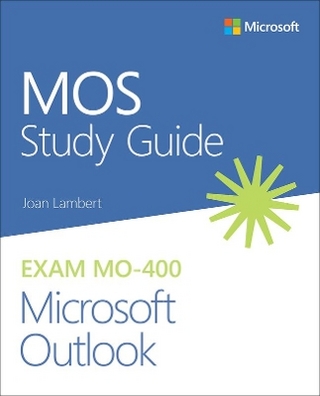
The E-mail Optimisation Toolkit
Ark Group (Verlag)
978-1-906355-70-8 (ISBN)
- Titel ist leider vergriffen;
keine Neuauflage - Artikel merken
Book review: The E-Mail Optimisation Toolkit - Dr Thomas Jackson Review by Geoff Smith, corporate records manager, Leicester City Council December 2009. Three or maybe four times in the recent history of mankind a new technology has been introduced that fundamentally transforms human society and the way people communicate with one another. The names Morse, Bell and Marconi are familiar to us all, but what about Ray Tomlinson? (No, he's not the guy in the Royle Family.) Late in the summer of 1971, this relatively unknown engineer sent the first e-mail. This simple evolutionary step undoubtedly launched the digital revolution. Over the last decade the growth in e-mail use has been so rapid that it is now estimated an e-mail message needs only to be forwarded between five and seven times to reach any e-mail user in the world, and a staggering 247 billion e-mails are sent each day (that's 170 million by the time you've read to here). It has become a powerful business tool and is used for decision making, processing transactions, communicating policy, marketing and managing many aspects of our daily lives. Its popularity lies in its immediacy and ease of use.
However, along with the benefits come the risks - spam and phishing being obvious concerns. I'm sure we've all experienced the grind of trawling through the voluminous and long e-mail chains that invariably await us on returning to the office following a relaxing holiday or any duration away from our desks. We have all become, as this publication would describe, 'e-mail addicts' and it is little wonder that e-mail is often described as the cholesterol of modern business. With all of this in mind, an e-mail management strategy is now an imperative for any organisation. Invariably the challenges being faced by organisations to take control of e-mails are how and where to archive them, how to find them to meet legal and access requirements, how to combine them with other content and records and how to efficiently manage e-mail within a business process. The approaches applied can typically vary from a blanket technological view that anything over a certain timescale is deleted through to keeping everything for ever, just in case. Either way it is usually the remit of information managers to resolve, and thankfully help is now at hand.
The E-mail Optimisation Toolkit by Dr Tom Jackson of Loughborough University ('Dr E-mail' in the media) combines academic research and everyday business case studies to build a prescription to manage our addiction to e-mail. It is well structured, punchy in style with very little waste and, as the name suggests, it's a toolkit that allows the reader to dip in and out providing guidance at all stages of their e-mail management evolution. The initial chapters set the scene of the impact of e-mail on modern organisations and individuals through analysis of the psychological and physical effect on an employee, their productivity and the associated costs to the employer. Insight is given to employee behaviour and evidence-based policy making including tackling such thorny issues as personal e-mail use at work. By providing ideas and examples of the methods a number organisations have employed, such as cold turkey 'e-mail free days' and 'e-mail performance management', with concise and detailed results it guides us to an approach that fits any locality. Each section is summarised with a view of best practice and how to implement it.
The middle sections detailing business case development and strategy evaluation are invaluable. Dr Jackson is one of the very few to provide concise and simple metrics for e-mail management benefits analysis. The bonus is that these metrics have been tried and tested across myriad organisations. By providing advice on developing the business case, communicating your strategy to a wider audience and then evaluating benefits, this toolkit is a unique and essential reference source for all those tasked with developing and implementing e-mail optimisation strategies. In the final chapter there is an attempt to cover 'The Future' which for me is a slightly disappointing end to the publication. The approach suggests maximising employee performance through monitoring which is undeniably valid but what about other tools? I could find no reference to the rise of instant messaging and social media, and the impact these will have on e-mail optimisation and its use within business. I only raise this as I have an 11 year old son who does his homework via a community on Bebo, manages his social diary using Facebook and, dare I say, e-mail is something old dodderers like his father use.
In other words the next generation will be upon us soon and are less engaged with e-mail. Notwithstanding this, Dr Jackson is to be commended for his research and practical application to the subject of e-mail management. On the whole this publication is an essential tool for any organisation seeking to optimise the management of e-mail and worthy of the investment. I also thoroughly recommend you visit Dr Jackson's website. If e-mail overload is providing irritation to your organisation or you are suffering from an e-mail addiction, then my advice to you is go and see the doctor.
DR THOMAS JACKSON is a senior lecturer in the Department of Information Science at Loughborough University. Nicknamed 'Dr E-mail' by the media, Tom and his research team work in two main research areas: electronic communication within the workplace, and applied and theory-based knowledge management. In both research fields Tom has worked with and continues to work closely with both private and public sector organisations throughout the world. He is on a number of editorial boards for international journals and reviews for many more. He has given a number of keynote talks throughout the world. Over the last few years he has brought in nearly GBP1m in research funding. He is currently working on a number of exciting projects from using genetic algorithms for timetable creation for train operators, to measuring the physical effects of e-mail on the human body. Tom has recently created a new MSc postgraduate programme in information management and business technology, which has been designed by industry for industry. However, his main passion in life is watching and playing football.
The increasing size of e-mail communication Chapter 1: Stage one - Identifying what other organisations have tried in the past 'No e-mail day' Banning all internal e-mail Charging for e-mail Playing a game Additional e-mail system: Short messaging service E-mailing the senders to solve the problem What can be learnt from these approaches? Chapter 2: Stage two - What is the known impact on employees? Information deficiency Poorly targeted e-mails Processing and filing of e-mail Interruption E-mail addiction The employer challenges Do private e-mails exist? The cost of disaster recovery Retention, regulation and legislation Summary. Chapter 3: Stage three - Positioning the organisation to capturing employees' e-mail behaviour Employer motivation versus reaction to being monitored Does monitoring change behaviour? E-monitoring recommendations Creating an e-mail policy Summary. Chapter 4: Stage four - Capturing the e-mail landscape The survey approach The software approach E-mail infrastructure audit Summary. Chapter 5: Stage five - Interpreting the results Keeping it simple - The traffic light system Case study: One of the world's largest banks Summary. Chapter 6: Stage six - Developing a workable and cost effective e-mail communication strategy Regulation and legislation Managing the infrastructure Optimising e-mail usage Summary. Chapter 7: Stage seven - Building a business case to gain support Calculating the cost of e-mail Cost of an e-mail disaster/downtime Cost of litigation Cost of poorly-performing infrastructure Potential efficiency savings. Chapter 8: Stage eight - Implementing a workable and cost effective e-mail strategy A change management plan for success Approaches to and the contents of e-mail training Developing software to change behaviour. Chapter 9: Stage nine - E-mail strategy evaluation Static evaluation Dynamic evaluation. Chapter 10: The future Can e-mail be used for anything else? What has been tried before and did it work? Using e-mail to find experts Employee performance: e-mail and stress Summary Appendix 1: E-mail questionnaire Appendix 2: Categorising the questionnaire results Appendix 3: Slides from the e-mail training programme Index
| Erscheint lt. Verlag | 29.9.2009 |
|---|---|
| Zusatzinfo | Illustrations |
| Sprache | englisch |
| Themenwelt | Informatik ► Netzwerke ► Mail Server |
| ISBN-10 | 1-906355-70-3 / 1906355703 |
| ISBN-13 | 978-1-906355-70-8 / 9781906355708 |
| Zustand | Neuware |
| Informationen gemäß Produktsicherheitsverordnung (GPSR) | |
| Haben Sie eine Frage zum Produkt? |
aus dem Bereich

